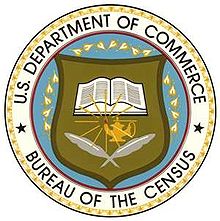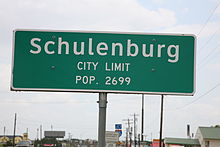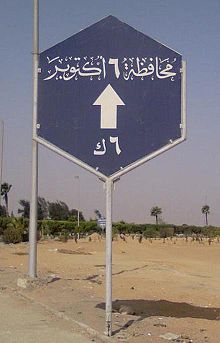- City proper
-
City proper is defined as a "locality with legally fixed boundaries and an administratively recognized urban status that is usually characterized by some form of local government",[1][2][3][4] or the area within the corporate limits. This definition has been consistently used since the United Nations Demographic Yearbook 2000.[5] The authors of "Urban development in the world dryland regions" note that "city proper: defined as a locality with legally fixed boundaries and an administratively recognized urban status which is usually characterized by some form of local government" was used as far back as in the United Nations Demographic Yearbook 1976.[6] Using the prevalent definition, "city proper" is not limited to a city, it can describe the complete area of any locality that fits the definition. Also, there is no universal definition for city.[7] The United Nations sometimes use the definition “the city proper is the single political jurisdiction which contains the historical city centre.”[8] City proper is one of the three basic concepts used to define urban areas and populations.[9] The other two are urban agglomeration, and the metropolitan area. "City proper" sometimes takes on different meanings in different parts of the world.[10] Even in the English speaking world, there can be considerable confusion about the term “city proper.”[11] In some countries, city limits that act as the demarcation for the city proper are drawn very wide, in some very narrow. This can be cause for recurring controversy. In simple terms, city proper is the area within the city limits. It is not limited to the downtown or urban area, and it does not include the surrounding areas.
Contents
Usage
In its strict sense, city proper is used as a technical term in demography, the statistical study of human populations. Under the title "World Urbanization Prospects", the United Nations issues every two years estimates and projections of the urban and rural populations of all countries of the world. The book defines the population of a city proper as "the population living within the administrative boundaries of a city."[12] The book continues to say that "city proper as defined by administrative boundaries may not include suburban areas where an important proportion of the population working or studying in the city lives."[13]
 In demography, city proper is one of the three basic concepts used to define urban areas and populations.
In demography, city proper is one of the three basic concepts used to define urban areas and populations.
In demography, city proper is one of the three basic concepts used to define urban areas and populations.[9] The other two are urban agglomeration, and the metropolitan area. In addition, there are Census Statistical Areas and permutations thereof.
A United Nations University working paper titled “Urban Settlement”[9] reviews the most commonly used data sources, and highlights the difficulties inherent in defining and measuring the size of urban versus rural populations. It says: “The city proper is determined by legal and administrative criteria, and typically comprises only those geographical areas that are part of a legally defined, and often historically-established administrative unit. However, many urban areas have grown far beyond the limits of the city proper, necessitating other measures. An urban agglomeration is the de facto population contained within the contours of a contiguous territory inhabited at urban density levels without regard to administrative boundaries’. Urban agglomerations are thus determined by density: the agglomeration ends where the density of settlement drops below some critical threshold. A still more comprehensive concept is the metropolitan area.”
In short, there is no "right" way to define a city or municipality. "City proper" is one of the different ways.
Etymology
 In encyclopedias, the term “city proper” is often used as an example to illustrate a meaning of the word “proper” as "tightly defined"
In encyclopedias, the term “city proper” is often used as an example to illustrate a meaning of the word “proper” as "tightly defined"
The term is a combination of “city” in the sense of “an incorporated administrative district”,[14] and “proper” in the sense of “strictly limited to a specified thing, place, or idea” or “strictly accurate”[15] In encyclopedias, the term “city proper” is often used as an example to illustrate the meaning of the word “proper” in the sense of "tightly defined."
- Encarta: “narrowly identified, strictly identified and distinguished from something else” - stayed in the suburbs, not the city proper[16]
- Merriam-Webster: “strictly limited to a specified thing, place, or idea <the city proper>”[17]
- Dictionary.com: “in the strict sense of the word (usually used postpositively)”:- Is the school within Boston proper or in the suburbs?[18]
- Sensagent: “limited to the thing specified "the city proper[19]
- The Free Dictionary: “Being within the strictly limited sense, as of a term designating something: the town proper, excluding the suburbs.”[20]
Internationalization
Especially when translated from the English or back, "city proper" sometimes takes on different meanings in different parts of the world. Some languages have no equivalent.
The United Nations Demographic Yearbook is compiled using questionnaires dispatched annually to more than 230 national statistical offices.[9] These questionnaires ask for the country-specific definition of urban areas, rural areas and city proper.[21] In its glossary,[22] the Yearbook defines "City proper" again as "a locality defined according to legal/political boundaries and an administratively recognized urban status that is usually characterized by some form of local government." In its data however, the United Nations Demographic Yearbook affords the individual countries considerable leeway over the definition of "City proper". The table titled "Population of capital cities and cities of 100 000 or more inhabitants"[10] provides several country-specific definitions for "city proper" that diverge from the provided definition:
- Japan: "Except for Tokyo, all data refer to shi, a minor division which may include some scattered or rural population as well as an urban centre." In Tokyo, "data for city proper refer to 23 wards (ku) of the old city."
- Australia: "For all regions it is not possible to distinguish between 'city proper' and 'urban agglomeration' areas, therefore data has been included under 'city proper'."
- UK, Thailand, Qatar, Cyprus, Bangladesh, Suriname, Colombia, Nicaragua, Canada do not report City Proper data, agglomerations only.
- Turkey provides city proper data for most cities, for some large cities, such as Istanbul or Ankara, only agglomeration data are given.
- Mexico provides city proper data for most cities, for some large cities, such as Guadalajara, Mexico City or Monterey, only agglomeration data are given.
- Poland: A city can be "an administratively separated area entitled to civil (municipal) rights."
- France: "Data for cities proper refer to communes which are centres for urban agglomeration."
These definitions are those given for the purpose of the United Nations Demographic Yearbook. One should not assume that these necessarily are the prevailing definitions in their respective countries.
Misuse
 “City proper” is often misused for the city center. The city proper of Tokyo includes islands nearly 2000 km away
“City proper” is often misused for the city center. The city proper of Tokyo includes islands nearly 2000 km away
Even in the English speaking world, there can be considerable confusion about the term “city proper.” Official city websites sometimes claim that ”the city proper is the area of the city where the population is the most densely populated”[11] - which is a common misconception. Even noted demography experts, such as Richard L. Forstall, Richard P. Greene, and James B. Pick, authors of the paper "Which Are The Largest? Why Published Populations For Major World Urban Areas Vary So Greatly" (which is the basis for List of metropolitan areas by population),[23] can get confused about the usage of “city proper.” On page 2, they give “city proper” an “administrative definition.” On page 5, they imply that the administrative boundaries define the “city proper.” Yet on page 14, they make “city proper” a smaller subset of the administrative areas of the cities of Tokyo, Mexico City and Chicago, and imply that “city proper” and “administrative area” can be different. When articles are translated from other languages, “city proper” is often misused for the city center.[24] One should not automatically assume that "city proper" always refers to “administrative area”. Caution should be exercised if the text was translated from another language.
Controversy
 The city proper of Hulunbuir (red) in Inner Mongolia (orange) is recognized as the largest city in the world by area
The city proper of Hulunbuir (red) in Inner Mongolia (orange) is recognized as the largest city in the world by area
 Divided into several Local Government Areas, Lagos, the most populous city in Africa, and one of the most populous and fastest growing cities in the world, does not count as a city proper
Divided into several Local Government Areas, Lagos, the most populous city in Africa, and one of the most populous and fastest growing cities in the world, does not count as a city proper
In some countries, city limits that act as the demarcation for the city proper are drawn very wide, or very narrow. This can be cause for recurring controversy.
List of cities by surface area lists little known cities that are larger than many countries. By area, the city of Altamira, Brazil (population 84,000) is bigger than Greece. The City of Kalgoorlie-Boulder (population 32,000) covers more area than Hungary, Portugal, Austria or Ireland. While these examples cause limited debate, cities in China are a source of continuing disagreement.
The Chinese city of Hulunbuir in Inner Mongolia is recognized as the largest city in the world by area. According to the “Urban Settlement” working paper, “in 1986, to cope with growing administrative demands at the local level, China essentially reclassified counties as cities in order to allow local city governments to control the surrounding areas.”[9] The authors state that “the Chinese city of Chongqing is another case in point. Even though the municipal district of Chongqing has a total population of more than 30 million inhabitants, fewer than 6 million actually live in Chongqing city proper. Depending on which classification is used, Chongqing is sometimes listed as the world’s largest city and, in other cases, does not even appear in the top rung of urban population rankings.” (Note the context of "city proper.")
Yunyan Yang describes the problems one is faced with when interpreting population data of Chinese cities proper, using the example of Wuhan.[25] “Misconceptions and Complexities in the Study of China's Cities: Definitions, Statistics, and Implications,” an article that appeared in the Journal of Eurasian Geography and Economics, illustrates and clarifies factors leading to misunderstanding and misconceptions regarding the number of inhabitants of China's major cities. (In their paper, the authors use “city proper” in the context of "city districts", and not as the larger administrative area.)[26]On the other side of the extreme is Metropolitan Lagos. This city has a population of nearly 8 million according to the latest census - which is debated. Official data by the Lagos State estimate the population of Metropolitan Lagos at more than 14 million.[27] However, there is no Metropolitan Government. The Municipality of Lagos was disbanded in 1976 and divided into several Local Government Areas. As a result, the most populous city in Africa, and one of the most populous and fastest growing cities in the world[28] can be missing from lists of cities proper. A similar situation exists in Australia, where large cities are divided into much smaller Local Government Areas.
As long as "city proper" is used as defined above, size and population density have no bearing on the meaning of the term. "City proper" is just one of several ways of describing a city, in this case using administrative boundaries. The drawing of administrative boundaries remains within the purview of a sovereign state.
See also
- Lists of cities
- List of cities by surface area
- World's largest municipalities by population (attempts to use strict city proper concept)
- Cities of present-day nations and states
- List of capitals by population density
- List of towns and cities with 100,000 or more inhabitants
- Historical urban community sizes
- List of cities proper by population density (Based on the entire city proper)
- List of largest cities throughout history
- List of metropolitan areas by population (based on study by Richard Forstall, Richard Greene, and James Pick)
- List of urban areas by population (list of contiguous urban areas of the world based on Demographia)
- Rank mobility index (measure of a city's change in population rank among a group of cities)
- World's largest cities (explaining alternative measures)
References
- ^ klaus kästle (2009-08-31). "United States most populated cities". Nationsonline.org. http://www.nationsonline.org/oneworld/most_pop_cities_usa.htm. Retrieved 2010-07-26.
- ^ "World Urbanization Prospects: The 2007 Revision Population Database". Esa.un.org. http://esa.un.org/unup/index.asp?panel=6. Retrieved 2010-07-26.
- ^ "United Nations Statistics Division - Demographic and Social Statistics". Millenniumindicators.un.org. http://millenniumindicators.un.org/unsd/demographic/sconcerns/densurb/densurbanNotes.htm. Retrieved 2010-07-26.
- ^ Demographic Yearbook 2005, Volume 57. United Nations. 2008. p. 756. ISBN 9210510992. http://books.google.com/books?id=OwfGJtkpCbwC&pg=PA241&lpg=PA241&dq=locality+with+legally+fixed+boundaries+and+an+administratively+recognized+urban+status+that+is+usually+characterized+by+some+form+of+local+government#v=onepage&q=locality%20with%20legally%20fixed%20boundaries%20and%20an%20administratively%20recognized%20urban%20status%20that%20is%20usually%20characterized%20by%20some%20form%20of%20local%20government&f=false. Retrieved 2010-07-19.
- ^ United Nations. Dept. of Economic and Social Affairs (2002). Demographic yearbook, 2000. United Nations Publications, 2002. p. 23. ISBN 9210510917.
- ^ Robert B. Potter and Virginia Potter (1978). Urban development in the world dryland regions: Inventory and prospects. Geoforum. pp. 349–379.
- ^ Merriam-Webster entry for "city"
- ^ "Global Urban Indicators - Selected Statistics". UN habitat. November 2009. http://www.unhabitat.org/downloads/docs/global_urban_indicators.pdf. Retrieved 20 Jul 2010.
- ^ a b c d e David E. Bloom, David Canning, Günther Fink,Tarun Khanna, Patrick Salyer. "Urban Settlement". Working Paper No. 2010/12. Helsinki: [[ World Institute for Development Economics Research ]]. http://www.wider.unu.edu/stc/repec/pdfs/wp2010/wp2010-12.pdf. Retrieved 20 Jul 2010.
- ^ a b Population of capital cities and cities of 100 000 or more inhabitants
- ^ a b City of Saint John
- ^ World Urbanization Prospects. United Nations. 2004. p. 2. ISBN 9211413860. http://books.google.com/books?id=oxOAckK2stYC&pg=PA105&lpg=PA105&dq=%22city+proper%22+definition#v=onepage&q&f=true. Retrieved 2010-07-19.
- ^ World Urbanization Prospects. United Nations. 2004. p. 104. ISBN 9211413860. http://books.google.com/books?id=oxOAckK2stYC&pg=PA105&lpg=PA105&dq=%22city+proper%22+definition#v=onepage&q&f=true. Retrieved 2010-07-19.
- ^ "WordNet Search - 3.0". Wordnetweb.princeton.edu. http://wordnetweb.princeton.edu/perl/webwn?s=city. Retrieved 2010-07-26.
- ^ "Proper - Definition and More from the Free Merriam-Webster Dictionary". Mw2.merriam-webster.com. 2007-04-25. http://mw2.merriam-webster.com/dictionary/proper. Retrieved 2010-07-26.
- ^ Encarta example for the usage of “proper”
- ^ Merriam-Webster example for the usage of “proper”
- ^ Dictionary.com example for the usage of “proper”
- ^ Sensagent example for the usage of “proper”
- ^ Free Dictionary example for the usage of “proper”
- ^ Questionnaire on Metadata for Population and Housing Census
- ^ The United Nations Demographic Yearbook
- ^ Which Are The Largest? Why Published Populations For Major World Urban Areas Vary So Greatly
- ^ Overview of Suzhou City
- ^ Yunyan Yang. "Urban Labour Market Segmentation:Some Observations Based on Wuhan Census Data". Wuhan: The China Review, Vol. 3, No. 2 (Fall 2003), 145–158. http://www.chineseupress.com/promotion/China%20Review/vol3_2_files/8.%20YY-Yang.pdf. Retrieved 20 Jul 2010.
- ^ Kam Wing Chan. "Misconceptions and Complexities in the Study of China's Cities: Definitions, Statistics, and Implications". University of Washington: Bellwether Publishing. http://bellwether.metapress.com/content/d10wn78mqur749g0/fulltext.pdf. Retrieved 20 Jul 2010.
- ^ "Population (Lagos)". http://www.lagosstate.gov.ng/index.php?page=subpage&spid=12&mnu=null. Retrieved 2010-07-28.
- ^ World's fastest growing cities and urban areas from 2006 to 2020, by CityMayors.com
External links
- WHICH ARE THE LARGEST? WHY PUBLISHED POPULATIONS FOR MAJOR WORLD URBAN AREAS VARY SO GREATLY (Slightly outdated study that became the basis for List of metropolitan areas by population)
- Misconceptions and Complexities in the Study of China’s Cities: Definitions, Statistics, and Implications (An attempt to clarify China's population statistics, with special emphasis on the [hukou system])
- The urban transformation in the developing world (Nearly two-thirds of the world's urban population, more than one and a half billion people, live in the cities of the South. Within little more than a generation their number will triple)
Categories:- Cities
- City
- Populated places by type
- Types of country subdivisions
- Demographics
- Demography
- Censuses
Wikimedia Foundation. 2010.



